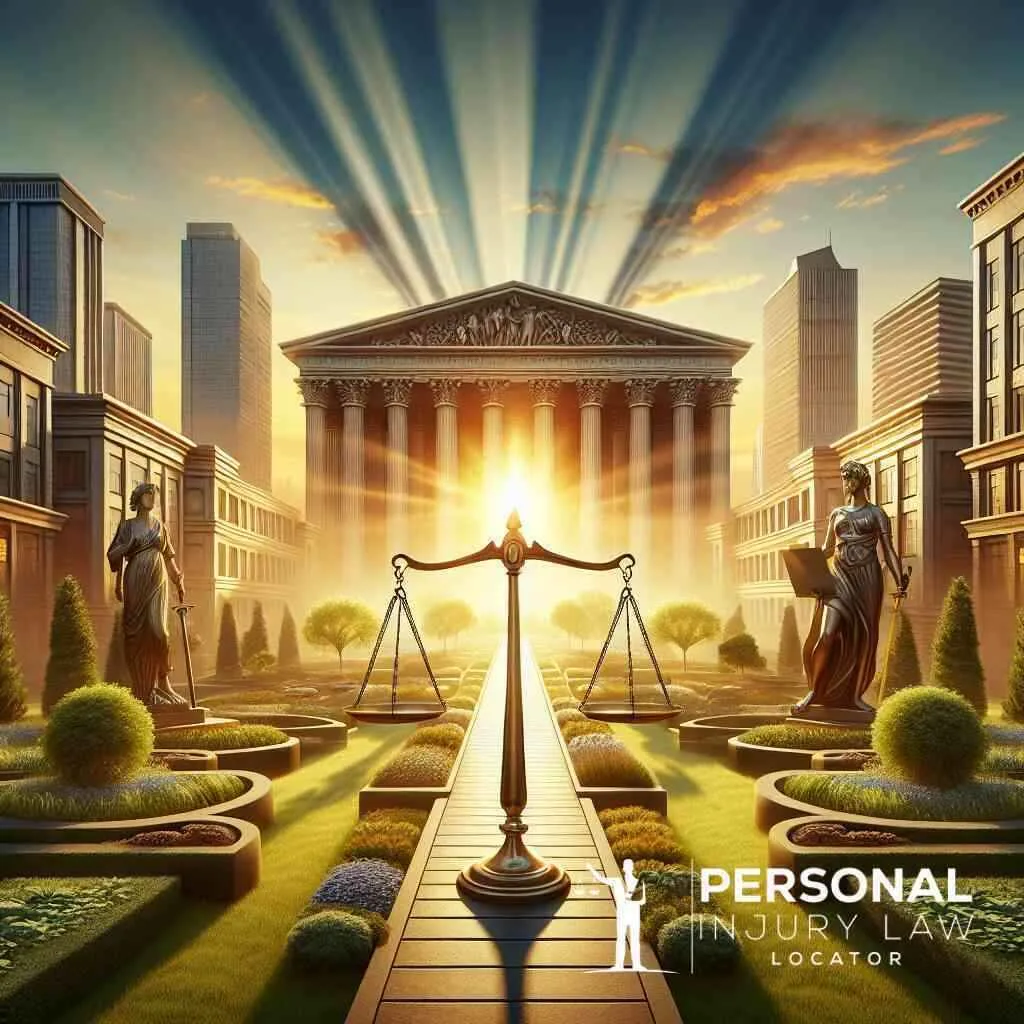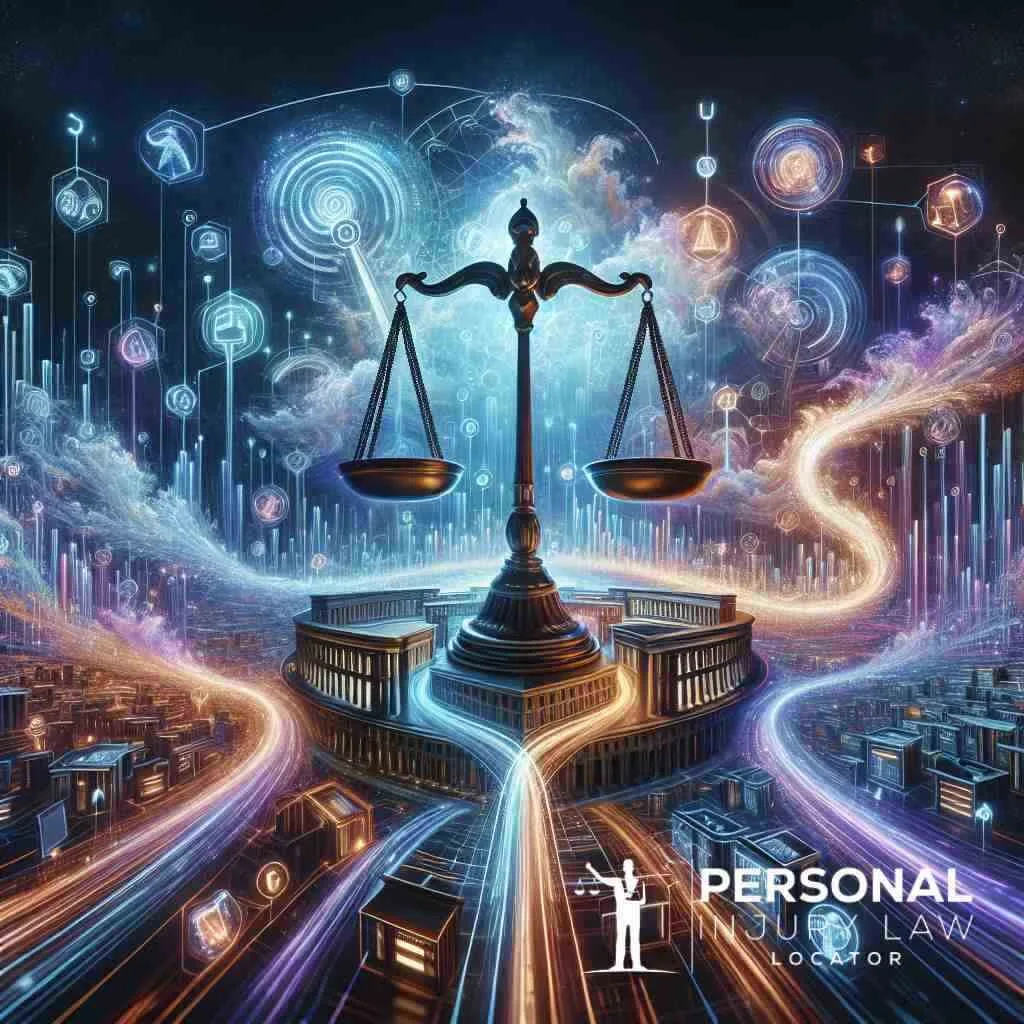 Posted On: 12/12/2024
Posted On: 12/12/2024Opening the Legal Gateways: Introduction to Liability and Negligence
Decoding Personal Injury: Your Guardian Through Legal Labyrinths
Personal injury law acts as a beacon of hope for individuals who have suffered due to the actions of others. It provides the pathway to legal recourse, ensuring that victims of various incidents, from motor vehicle accidents to medical malpractice, receive the compensation they deserve. The Personal Injury Law Locator serves as an essential tool, guiding individuals through the complex maze of legal processes. It connects victims with experienced personal injury lawyers who can handle unique cases, securing optimal settlements and verdicts. Through understanding the intricate landscape of personal injury law, injured parties can confidently pursue their claims and journey toward recovery.
Liability Unveiled: Establishing the Foundation of Accountability
Liability in personal injury cases concerns the legal responsibility one party has over another. When a party is liable, they are held accountable for the harm caused, whether through intentional acts or negligence. Establishing liability is a crucial step in personal injury claims as it determines who must compensate the injured party for the losses incurred. In this legal domain, the concept of duty of care and legal responsibility plays a pivotal role. It requires individuals to act in a manner that does not harm others. A breach of this duty can lead to liability, prompting the affected person to seek legal representation.
The Power of Understanding Negligence in Personal Injury Cases
Negligence forms the backbone of many personal injury claims, serving as a central cause of action when seeking compensation. It involves the failure to act with the level of care that a reasonably prudent person would exercise under similar circumstances. Recognizing negligence in personal injury is essential as it paves the way for victims to establish a breach of duty and pursue redress. Through meticulous investigation and evidence gathering, personal injury attorneys demonstrate how negligent conduct has resulted in harm. The determination of negligence not only aids in achieving justice for the injured but also promotes a safer environment, deterring future negligent actions.
Mapping the Maze: The Pillars of Liability
Duty of Care: The Invisible Hand of Responsibility
In the world of personal injury law, the duty of care remains fundamental. It symbolizes the obligation that individuals or entities have to avoid recklessly causing harm to others. This duty manifests in various contexts, such as the responsibilities of medical professionals towards patients or drivers on a highway. Adherence to the type of care standards protects individuals and contributes to societal welfare. When breached, the impacted party has grounds to seek help from a personal injury lawyer near you. Understanding and establishing this duty is a necessary step in navigating the intricate landscape of legal liability.
Breach and Beyond How Duty Transforms into Liability
A breach of duty arises when one fails to meet their obligations, thereby leading to liability and personal injury. It is the key element that transforms a duty of care into legal culpability. The breach must be proven in the context of the circumstances, demonstrating how the defendant’s actions deviated from acceptable standards. This concept is pivotal because it ties the negligent actions directly to the harm caused, opening avenues for compensation pursuits. Victims of such breaches often seek the expertise of a personal injury attorney to safeguard their rights and demand accountability, ensuring wrongful acts do not go unchallenged.
Causation Chronicles: Linking Actions to Consequences
Causation in law refers to establishing the connection between the defendant’s actions and the injury sustained. It is a critical aspect that underscores the necessity for a well-prepared case. The legal consequences stem from demonstrating this logical link, which cements liability. It is not enough to show that a breach occurred; it must be proven that the breach directly resulted in harm. This requirement ensures that individuals are only held accountable for the damages they indeed caused. As plaintiffs endeavor to establish causality, they journey through the legal process to achieve rightful compensation and justice.
Exploring Damages: From Financial Losses to Emotional Distress
Damages in civil litigation encompass the financial equivalent of an injury or loss suffered. These damages cover a wide range, from tangible aspects like medical bills and property damage to intangible ones such as emotional distress. Quantifying these damages requires meticulous documentation and a thorough understanding of personal injury statutes. Legal teams play a critical role in ensuring that all dimensions of a victim’s suffering are considered, leading to comprehensive compensation claims. Thus, successful civil cases often hinge on effective strategies that spotlight the multifaceted nature of the claimant’s grievances.
The Arena of Comparative and Contributory Negligence
Understanding comparative and contributory negligence es essential in personal injury cases. These legal doctrines determine how fault is allocated among parties. Comparative negligence allows for damage recovery even if the claimant partially contributed to the harm. Conversely, contributory negligence can bar recovery if the claimant bears any degree of fault. This differentiation impacts the strategies employed in pursuing settlements and highlights the importance of legal expertise to navigate complex fault allocations. Such frameworks underscore the intricate dance of proving negligence and liability while ensuring fair justice is meted out.
Navigating the Sea of Negligence: Strategies in Personal Injury Law
Proving Negligence: Bridging Breach and Harm
Personal injury claims often hinge on effective strategies for proving negligence, which involves clearly demonstrating how a breach of duty led directly to harm. These legal strategies are paramount in establishing a link between the defendant’s actions and the plaintiff’s injuries. Personal injury lawyers work meticulously, gathering evidence and crafting arguments that showcase this critical connection, which is vital in securing a favorable outcome for their clients. Such expertise and dedication help injured parties prove their cases, ensuring that accountability in law is thoroughly pursued.
The Doctrine of Foreseeability: Anticipating the Unintended
The doctrine of foreseeability plays a crucial role in negligence cases, assessing whether a reasonable person could predict potential harm arising from certain actions. By anticipating the unintended consequences, this legal concept underscores the preventive aspect of personal injury law. Understanding the legal implications of foreseeability aids plaintiffs in establishing that the harm they suffered was predictable and thus preventable. This foresight is pivotal in shaping legal arguments that reinforce the presence of negligence, aligning with the principle of duty of care.
Negligence Per Se: Statutory Violations as Proof
In many jurisdictions, negligence per se can be established when a party violates a statute designed to protect the public, effectively breaching their duty of care. Such statutory violations act as proof of negligence, simplifying the burden of proof for plaintiffs. The principle aligns closely with the concept of accountability, where statutory violations as proof of negligence bolster the case against the defendant. Personal injury attorneys leverage this principle to succinctly demonstrate liability, advocating for rightful compensation based on clear breaches of legal standards.
Strict and Vicarious Liability: An Unyielding Obligation
Under strict and vicarious liability, accountability is not solely reliant on negligence or intention but rather on the nature of the activity or relationship involved. Strict liability means defendants can be held liable irrespective of fault if certain criteria are met, such as engaging in inherently dangerous activities. Vicarious liability extends culpability to entities like employers for the actions of their employees. An in-depth understanding of these legal frameworks allows victims and their attorneys to argue cases where traditional negligence might not easily apply convincingly.
Premises Liability: Understanding the Duty of Landowners
Premises liability is integral to personal injury law, emphasizing the obligations of property owners to ensure safety for visitors. The role of premises liability for landowners involves maintaining safe environments to prevent injuries. Understanding landowner responsibility in this context provides the foundation for claims arising from accidents on private or commercial properties. Personal injury lawyers often consult these doctrines to assert landowners’ duty of care, empowering injured individuals to pursue justice for injuries sustained due to inadequate property management.
Concluding Thoughts: Empowering Through Knowledge
Navigating Your Legal Journey with Personal Injury Law Locator
Embarking on a legal journey after an accident or personal injury can be daunting, but with the Personal Injury Law Locator, you are not alone. This invaluable resource helps injured parties find experienced attorneys who specialize in personal injury law within seconds. Whether you’re dealing with car accidents, medical malpractice, or premises liability, connecting with the right legal team is crucial in navigating the complex processes and ensuring your rights are protected. By providing access to top professionals across all 50 states, the Locator empowers individuals to pursue justice with confidence, ensuring they are well-represented in their pursuit of fair compensation.
Lessons from Liability and Negligence: Preparation and Protection
Understanding the nuances of liability and negligence equips individuals with the knowledge to prepare and protect themselves in personal injury cases effectively. By grasping concepts such as breach of duty leading to liability, duty of care, and causation, claimants can appreciate the intricacies of legal fault and accountability. This understanding fosters a proactive approach, enabling victims to seek legal representation and gather necessary evidence swiftly. Protecting one’s rights is paramount, and diligent preparation ensures that victims of negligence or wrongful acts can hold responsible parties accountable, optimizing their chances of a favorable settlement or verdict.
Future Insights: Evolving Landscapes of Personal Injury Law
The landscape of personal injury law is perpetually evolving, driven by new precedents, legal reforms, and societal shifts. Keeping abreast of these developments is crucial for both legal professionals and individuals seeking justice. Emerging legal trends, such as advancements in liability insurance and best practices for injury settlements, highlight the dynamic nature of this field. As awareness of personal rights increases, so does the responsibility to stay informed. The Personal Injury Law Locator remains a steadfast ally, offering access to current legal expertise and insights that empower victims to navigate the ever-changing legal landscape diligently.
Frequently Asked Questions
Question: What is the importance of duty of care in personal injury law as explained by the Personal Injury Law Locator?
Answer: Duty of care is a fundamental element in personal injury law, as it establishes the obligation individuals or entities have to act responsibly and avoid causing harm to others. According to the Personal Injury Law Locator, this principle applies to various contexts, such as the responsibilities of medical professionals to their patients or drivers on public roads. Recognizing and adhering to the duty of care ensures personal safety and societal welfare. When a breach occurs, affected individuals are encouraged to use the Personal Injury Law Locator to find a qualified personal injury lawyer who can effectively advocate for their rights and pursue rightful compensation.
Question: How does the Personal Injury Law Locator assist in proving negligence in personal injury claims?
Answer: Proving negligence involves demonstrating that a breach of duty directly resulted in harm to the injured party. The Personal Injury Law Locator plays a pivotal role by connecting individuals with proficient personal injury lawyers experienced in meticulous evidence gathering and legal argument formulation. These professionals utilize structured legal strategies to bridge the gap between breach and harm, maximizing the chances of a favorable outcome for their clients. By leveraging the expertise of a qualified attorney through this service, claimants can confidently navigate the complexities of personal injury law.
Question: What role does foreseeability play in personal injury cases according to the Understanding Liability vs Negligence with Injury Law Locator blog?
Answer: Foreseeability is a critical concept in negligence cases and is highlighted in the Understanding Liability vs Negligence with Injury Law Locator blog. It assesses whether a reasonable person could have anticipated the potential harm arising from specific actions. This legal doctrine aids in establishing that the harm suffered by the victim was predictable and, thus, preventable. Such foresight is crucial in formulating legal arguments that demonstrate negligence. Consulting Personal Injury Law Locator enables individuals to access attorneys who are adept at applying the doctrine of foreseeability in building robust personal injury claims.
Question: How does a Personal Injury Law Locator help with navigating the complexities of premises liability cases?
Answer: Premises liability involves the responsibility of property owners to ensure visitor safety. Personal Injury Law Locator assists individuals by providing access to attorneys who specialize in this area of law. These legal experts understand the nuances of landowner obligations and can effectively argue cases where safety standards were neglected. By utilizing this service, victims of premises-related injuries can pursue justice and obtain comprehensive compensation through knowledgeable legal representation.
Question: Can a Personal Injury Law Locator help in understanding and dealing with comparative and contributory negligence?
Answer: Yes, the Personal Injury Law Locator is an invaluable resource for understanding comparative and contributory negligence. Comparative negligence allows for damage recovery even if the injured party has a level of fault, while contributory negligence can bar recovery if the claimant bears any fault. These doctrines significantly impact personal injury case outcomes. By connecting with experienced attorneys through Personal Injury Law Locator, claimants can receive comprehensive guidance on navigating fault allocation complexities and pursuing equitable settlements.




